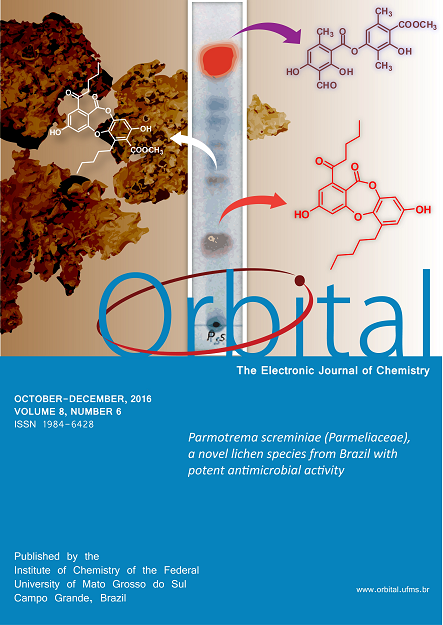Parmotrema screminiae (Parmeliaceae), a Novel Lichen Species from Brazil with Potent Antimicrobial Activity
- antibiotic activity,
- bioautography,
- lichen,
- Parmotrema,
- norlobaridone
- protolichesterinic acid ...More
Copyright (c) 2016 Orbital: The Electronic Journal of Chemistry

This work is licensed under a Creative Commons Attribution-NonCommercial-NoDerivatives 4.0 International License.
Abstract
Parmotrema is a genus of major interest in the lichen flora of Mato Grosso do Sul state, Brazil, since many of its species are sources of important bioactive compounds. Parmotrema screminiae Spielmann & Canêz, a novel species, is a noteworthy source of norlobaridone (a depsidone), protolichesterinic acid and atranorin (a depside). Extract composition was determined by TLC and NMR techniques (1H, 13C, and DEPT-135). The acetone extract was evaluated for antibiotic activity against Gram-negative (Escherichia coli, ATCC 25922) and Gram-positive bacteria (Staphylococcus aureus, ATCC 25923 and clinical strains), Enterococcus faecalis (ATCC 51299), and E. faecium (vancomycin-resistant clinical strain). Highly promising results were obtained, since the extract proved active against Gram-positive bacteria alone (MIC = 31.25 μg/mL for E. faecalis, 15.6 μg/mL for both E. faecium and clinical-strain S. aureus, and 7.8 μg/mL for standard S. aureus). Bioautography showed norlobaridone and protolichesterinic acid to be responsible for the antibiotic activity.

